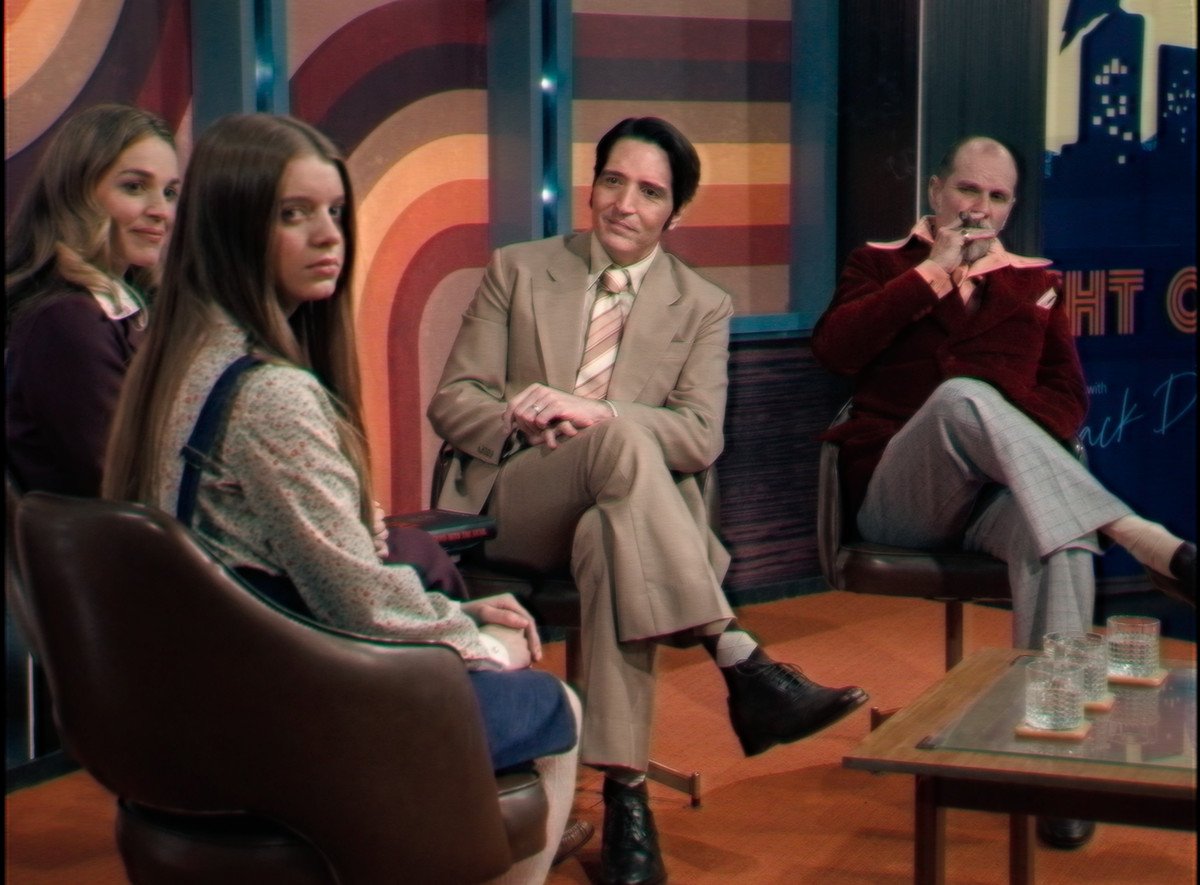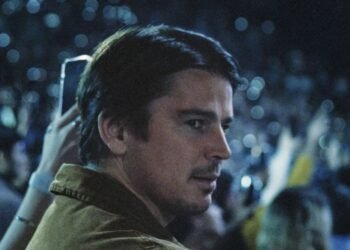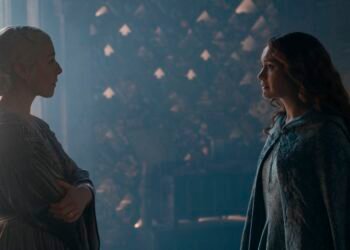Horror movies have really been lacking in panache lately. Sure, there have been plenty of horror movies with great narratives or structural conceits, or excellent scares. But covering the basic elements of memorable horror isn’t the same as stretching stylistically, and brazenly committing to a specific aesthetic, time period, or vibe the way Shudder and IFC’s new horror movie Late Night with the Devil does. That movie, in theaters this week, has enough flair to make up for what the rest of the movies have been missing.
Set in the late 1970s, Late Night with the Devil is framed as a documentary that follows the ill-fated final broadcast from fictional late-night TV host Jack Delroy. During that broadcast, something so horrible happened that it’s haunted the history of live television ever since.
Jack (David Dastmalchian), we learn, soared up the ranks of late-night talk show fame, and was once second only to Johnny Carson. Jack’s success was thanks to his terrific charm and charisma, though the narration also mentions a shadowy connection to the real-world, cult-like Bohemian Grove — a magnet for ’70s-era conspiracy theories. But since those halcyon days, Jack’s ratings have plummeted, and he’s getting desperate for viewers. That’s how he comes to invite an allegedly possessed young girl onto his show on Halloween night.

Image: IFC/Shudder
Directors Cameron and Colin Cairnes make a stellar commitment to the ’70s vibe, starting with the faux-documentary aesthetic and its perfectly cheap, made-for-TV title cards. The doc introduces Jack’s life and career leading up to the broadcast with the kind of gravelly bravado and manufactured seriousness that used to be the unmistakable sound of true-crime coverage, before that became the realm of millennial podcasters instead.
It’s perfect daytime TV fare, the kind of scintillating programming you might see if you were a kid in the ’70s, home sick from school, watching whatever was on TV, then being scarred by it for years to come. But the Cairnes brothers make sure that Late Night with the Devil’s version is always unmistakably in on its own joke, as it overdramatically informs the audience that we’re witnessing behind-the-scenes footage, interlaced with that fateful broadcast for the first time ever.
The behind-the-scenes footage is wonderful for a bit of extra flavor, but what makes Late Night with the Devil special is how carefully the Cairnes recreate the look and feel of a ’70s late-night show for the broadcast itself, which makes up most of the movie’s run time. There’s a garish, gorgeous set, with reds and yellows that would pop off the screen even if you still had a black-and-white set, and a studio audience ready to clap and laugh at even the slightest mention of Jimmy Carter’s struggling presidential administration.
Even the cartoon-image interludes that announce the commercial breaks look excellent, though they’ve created some backlash online, because they started out as AI-generated art the production team touched up and altered to make more authentic. Everything from the sets to the band looks outstanding and carefully crafted to evoke the era. But the true star of the show, as always in late-night television, is the host.

Image: IFC/Shudder
Jack is played to twitchy perfection by Dastmalchian, a character actor who’s always a delight in movies but is often relegated to a supporting player or a bit part. Dastmalchian forgoes the ’70s cliches and skips playing a cheap Carson knockoff, instead imbuing Jack with the kind of nervous energy that made Dustin Hoffman a star during the era the movie is evoking. During the broadcast, Jack snaps from charming to worried to desperate in the same heartbeat, like a bundle of exposed nerves all crackling with electricity at once. It’s a terrific, transfixing, transportive performance, and it’s hard to imagine any other actor pulling it off quite so delicately, or with this much heart.
With all its tremendous production design held together by the glue of Dastmalchian’s performance, the Cairnes revel in taking us on Late Night with the Devil’s ride, playfully tricking us into seeing things that aren’t really there, and winking at the camera whenever they get the chance with little touches like effects that look appropriately of the era, making it impossible to know whether they really happened on the stage or are a trick of the broadcast. All these neat little flourishes build to a finale that feels somewhere between a hallucination and something you could imagine happening on the worst day in live TV history.
The worst part of the movie’s ending, though, is that when we wake up from Late Night with the Devil’s hypnotic trance, we have to go back to movies that just don’t have the same sense of late-night showmanship. No one can match the devil for style, it seems.
Late Night with the Devil debuts in theaters on March 22.
















































